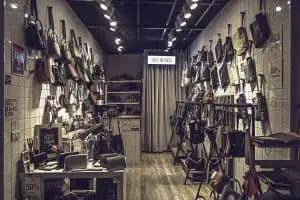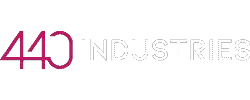When managing a fashion brand, conducting market research is an essential part of your job.
Market research can be used to test your message effectiveness, to evaluate the market response to your new collection, or to analyze future trends and influences over the fashion industry.
As a result, it is essential for any successful brand to keep the pulse of the market and know how to use the right research methodologies to explore and understand your audience.
One of the most practical and effective ways to conduct market research is through questionnaires.
They can be very practical and inexpensive to administer.
It’s important to notice, however, that it is not simple to design a questionnaire, as multiple variables interplay in their successful delivery.
In this post, we’re going to help you out by shortlisting 5 top tips to help you create questionnaires that are capable of delivering actionable results.
With no further ado, let’s delve into the topic.
#1 Think About The Questions With A Clear Participant in Mind.
The first thing to bear in mind as you approach the design of your questionnaire is to consider the participants in your research.
Identifying your participants is not much different from profiling your customers, in the sense that you need to make sure your questions are relevant for them, and more than anything else, they are able to answer them.
Try to have a clear picture of the participant you are going to engage in the study,
Use a sampling technique to identify criteria to create a participant pool. Here are some examples:
- Purposive Sampling. With Purposive Sampling you are choosing the cases that in your opinion are the most useful for your studies.
- Snowball Sampling. With Snowball sampling, only a few cases are identified by the researcher, then the researcher uses recommendations to pick the next participants.
- Self Selection Sampling. With self-selection sampling, researchers allow participants to get involved voluntarily.
- Haphazard Sampling. In this case, you are selecting participants, only because they are available for you.
- Quota Sampling. In quota sampling, a population is first segmented into mutually exclusive sub-groups, just as in stratified sampling, so that each type of participant is part of your selection pool.
Great! Now that you’ve identified the most appropriate sampling method, make sure you are collecting at least 30 respondents to your questionnaire so that the research will have some statistical evidence.
Let’s now move on to the actual questionnaire design.
#2 Identify the Three Question Variables: Attribute, Opinion, and Behavioural.
In order to design a strong questionnaire, it’s important to make sure we’re creating questions that are able to tackle the right variables.
In questionnaire design there are three main variables to consider:
- Attribute variables. These variables contain data about the respondent’s characteristics.
- Opinion variables. These variables record how respondents feel about something or what they think or believe is true or false.
- Behavioral variables. These variables contain data on what people (or their organizations) did in the past, do now, or will do in the future.
You can use one variable per question, to keep the questions simple.
At the same time, in order to understand more complex participant values and behaviors, you may need to ask multiple questions, as we’ll discuss in the next paragraph.
#3 Combine Variables to Ask Complex Questions.
Sometimes it can be challenging to ask complex questions through questionnaires. The reason is that either it is hard to formulate a clear question, or either our participants are unlikely to answer it.
Let’s use an example:
Question: How price-sensitive are residents in regards to the increase and decrease of discounts on clothing?
To understand the answer to this question, we actually need 5 different information points, over three types of variables.
- Attribute: Location
- Attribute: Age
- Behavior: What is your spending per shopping?
- Behavior: How often do you go shopping?
- Opinion: if the price of this item increased, would you consider a different brand?
If on the one end this approach may seem complex, on the other, it’s the only way we can actually delve into the complex behavioral analysis, making sure that we wouldn’t get instinctive or predictable answers.
For instance, if you were asking your employees:
“Do You Feel Your Compensation Level is Completely Adequate to the Time and Effort You Put in Your Job?” – The most likely answer is often: “No, I could be paid more.“
If instead, I am asking
“Do you feel that your job is able to support you in the lifestyle you chose for yourself and your family” – It’s more likely we would get an idea of whether the salary is a problem or not.
It’s also important to consider how a participant can answer a question you’re asking.
This is what we’ll be discussing in the next post.
#4 Construct Questions Following A Structured Approach
As you create your questions, make sure you’re equipping your participants with the right tools to answer them. Questionnaire design is a challenge, for many of the reasons we’ve already seen.
Our advice when possible is to adopt questions from others. There is nothing wrong with it. If a question works, why change it. As you conduct your research you’ll be able to hone your questions further.
Let’s not explore question typologies. We’re going to see how to chose the right type of question to allow your participant to better answer it.
Type 1: List Questions
In this question type, you’re listing possible answers, as answers are limited.
What is your native language?
- English
- Spanish
- ….
- Other
Type 2: Category Questions
In this question type, we’re proving options that broadly represent habits and patterns of behavior.
How often do you go shopping?
- Every day.
- Several times a week.
- ….
- Never
Type 3: Ranking Questions
In this question type, you’re proving a list, for your participant to rank in order to express a preference.
Please number each of the factors listed below in order of importance to you in your choice of a new car.
…. Carbon emissions
…..Size and capacity
…..Future resale value
…..Safety and Reliability
Type 4: Rating Questions
In this question type, you’re providing a range of answers to express how a participant feels about a topic.
“I feel employees’ views have influenced the decisions taken by management.”
- Agree
- Tend to Agree
- Tend to Disagree
- Disagree
Type 5: Open-Ended Questions
In this question format, a questionnaire provides a few lines where the respondent can write their opinions.
“Describe your last shopping experience at our retail stores”
The challenge is that aside from taking up quite a bit of the respondent’s time, these answers are actually hard to code.
So, what types of best practices should we follow? To wrap up the subject we’re looking into that in our next paragraph.
#5 Follow Best Practices
In order to succeed in your questionnaire you should:
- Make it as short as possible. The shorter the questionnaire, the more answers you will collect.
- Pilot test your questionnaire. This will allow you to make sure you’re asking questions your participants will be able to answer.
- Be considerate of personal information. Make sure you’re asking questions people will be willing to answer. To make sure this is the case, pre-testing is the way to go.
- Work around questions that people will not answer to, or would answer predictably. Design your questions so that you are not making the participant spend time on providing information that is so predictable it does not justify the research.
Great! Now that we’ve touched upon all relevant topics, it’s time to move towards our conclusive remarks.
Conclusions
There you have it! In this post, we’ve looked at some essential tips to help you design an effective questionnaire for your fashion brand.
As we’ve seen, there are multiple variables and elements to consider, which make questionnaire design quite a challenge.
We hope that in our post you’ve been able to find some helpful information to create your questionnaire and collect some useful and actionable data.
If you’re interested in research methodologies in fashion, don’t hesitate to explore our blog.
On our website we’re providing a wealth of information on fashion management and fashion business, to help you bring your vision to market. Enjoy!







